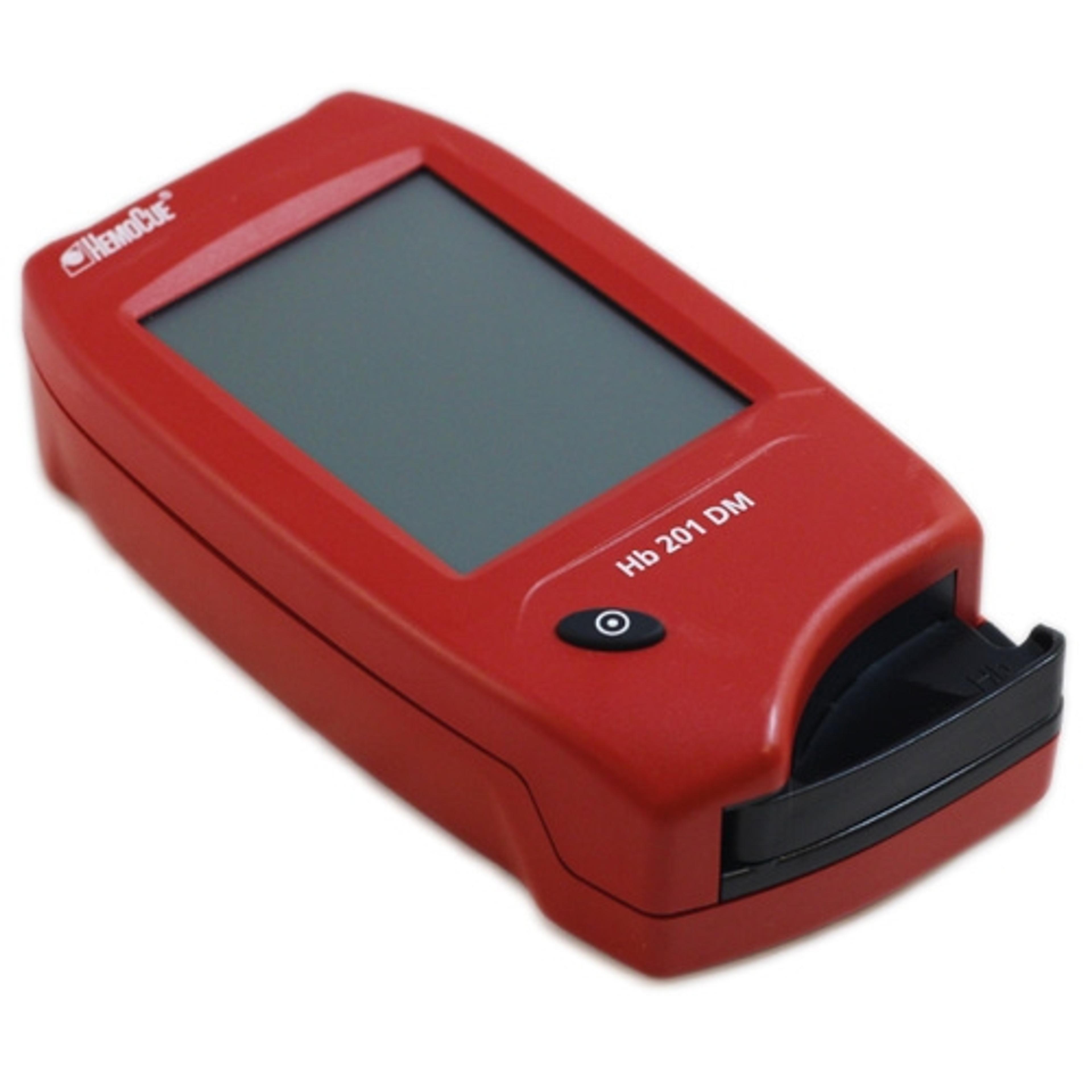Point-of-care testing advances ECMO blood management
Dr. Timothy Maul discusses the challenges of patient blood management during ECMO and the impact of accurate POC devices for clinical decision making
12 Sept 2024

Dr. Timothy Maul, a perfusionist and senior research scientist at Nemours Children’s Health in Orlando, Florida
Extracorporeal membrane oxygenation (ECMO) is a unique form of life support designed to temporarily assume the functions of the heart and lungs. For patients with severe cardiac and/or respiratory failure, ECMO serves as a bridge to recovery by carrying out the essential functions of oxygenation and circulation – outside of the body – for periods ranging from days to weeks, or even months. By allowing a patient’s heart and lungs to rest, ECMO buys time for surgical procedures and medications to take effect, as well as offering a chance for natural recovery[1-2].
Dr. Timothy Maul, a perfusionist and senior research scientist at Nemours Children’s Health in Orlando, Florida, provides an inside look at the challenges of ECMO and explains how access to near-real-time, reliable hematological measurements at the point of care can support timely clinical decisions and help save lives.
A blood balancing act
In an ECMO circuit, deoxygenated blood is taken from a patient’s vein and pumped through an artificial lung before being returned to either the venous (VV-ECMO) or arterial (VA-ECMO) circulation. Blood must be closely monitored throughout ECMO to ensure adequate oxygen levels, assess the need for blood transfusions, and manage bleeding or clotting risks.
According to Maul, there are two main challenges of blood management in ECMO patients. The first is the shifts in blood volume. “The addition of an ECMO circuit increases the patient’s corporeal volume, effectively reducing the volume of blood in the body at any given time,” he explains. “The extra volume outside the body can range from 350 mL in smaller circuits to 700 mL in larger ones, which can dilute a patient's hemoglobin and necessitate a transfusion to restore normal levels.” He also notes the inherent bleeding risks associated with introducing a large cannula or IV into an artery or vein, adding, “If a patient is bleeding from that large IV, then you need to replace that blood.”
The second challenge is biocompatibility, which arises from the body responding to the ECMO circuit as a foreign invader. “Patients tend to experience depletions in certain blood components, particularly clotting factors, platelets, and plasma because their body recognizes the ECMO circuit as foreign and begins to lay down proteins and clotting factors onto its surface,” explains Maul. “Even though we coat the cannulas and pumps, these coatings are imperfect, and eventually, patients start to deposit these substances on the circuit, meaning they are no longer available in the body.”
Assessing the need for blood transfusions
Shifts in blood volume and biological imbalances associated with the ECMO circuit can often necessitate blood transfusions in ECMO patients. However, for perfusionists like Maul, the primary concern is ensuring the ECMO circuit delivers enough oxygen to the patient. “The best way to increase oxygen delivery from an ECMO circuit is by boosting ECMO flow and/or increasing hemoglobin through the number of red blood cells, which are the ‘train cars’ that carry oxygen in the body,” he explains. “We assess whether we're providing enough oxygen by taking laboratory measurements of blood parameters to determine the patient’s oxygen levels and assess the need for a transfusion.”
One such measurement is hemoglobin concentration, which is key to ensuring the oxygen-carrying capacity is optimal[3-4]. While no formal guidelines exist for transfusion thresholds in veno-arterial (VA) and venous-venous (VV) ECMO, Maul notes that there are published reference ranges for hemoglobin levels: 7 to 10 grams per deciliter for children and adults, and 12 to 15 grams per deciliter for neonates. “The actual thresholds used are typically decided upon by institutional practices, in combination with the specific needs of the patient,” he says. “Transfusion guidelines for general critical care act as a baseline for ECMO, and we may go up from there depending on the patient.”
Monitoring hematologic parameters in ECMO patients

The HemoCue® Hb 201 DM System for hemoglobin has a wide range of settings and definable options, aiming to improve testing workflows and provide connectivity to digital health systems.
Determining if a blood transfusion is necessary is a critical decision, as blood transfusions carry several risks, including infection, rejection, and allosensitization[4-6] . "Patients may also suffer from transfusion reactions, leading to complications such as Transfusion-Related Acute Lung Injury (TRALI) and Transfusion-Associated Circulatory Overload (TACO), both of which worsen pulmonary conditions due to immune responses,” adds Maul.
Accurate measurement of hematologic parameters is therefore essential, particularly during the first few days of ECMO intervention. Initially, frequent Complete Blood Counts (CBCs) and blood gas analyses are performed. Many ECMO circuits also have non-invasive saturation monitors to provide real-time data, supplementing these measurements.
“CBC, which measures several components of the blood including red blood cells, white blood cells, hemoglobin, hematocrit, and platelets, is the gold standard,” Maul asserts. “If you are approaching a transfusion threshold and you're not quite sure whether you want to transfuse, you will usually get a CBC just to confirm that the hemoglobin is within the transfusion threshold for the institution, to trigger that decision.”
Lab-quality hemoglobin results at the point of care
Although lab-based CBC assessments remain the gold standard, Maul notes that standard laboratory tests can take at least an hour and emphasizes the role of reliable point-of-care (POC) devices in supporting timely decisions. “In-line gas monitoring provides real-time data with hematocrit estimates that are usually accurate within plus or minus 3 to 5%,” he says. “POC blood analyses can deliver results in approximately 2.5 minutes, and those using spectrophotometric analysis can provide hemoglobin measurements closely aligned with laboratory values.”
One notable device is the HemoCue® Hb 201 DM System, a handheld analyzer that enables the quantitative determination of hemoglobin in capillary, venous, and arterial whole blood. Calibrated against the ICSH reference method, it offers lab-quality results in CLIA-waived settings, while featuring a barcode scanner and automatic result transfer to minimize errors[7]. Results are generated in less than a minute, and only 10 µL of blood is required, which is important to avoid iatrogenic or “lab-induced anemia”, says Maul. “The more lab samples you take in serial measurements, the less blood patients have, increasing the likelihood that they may need a transfusion.”
“Doing more with less is key,” he adds. “The more that our systems can provide us with real-time or near real-time, non-invasive or less invasive measurements of the things that we are interested in, the safer it will be doing ECMO.”
Future challenges and innovations in ECMO
Reflecting on the past two decades, Maul acknowledges the significant advancements in ECMO, highlighting how current systems can support patients far longer than previously imaginable. However, he emphasizes that there is still more progress to be made.
“As a field, we need to shrink ECMO circuits down to the smallest sizes possible to minimize external blood volume, especially for neonates and children,” he asserts. “Additionally, biocompatibility is an ongoing challenge, as current coatings are still not fully effective in the long term.”
Despite these challenges, Maul remains optimistic. “I'm a big believer in the technology. We've come a long way, and I still think there's more that we can do,” he concludes.
References
1. Bartlett, R.H. and Gattinoni, L., 2010. Current status of extracorporeal life support (ECMO) for cardiopulmonary failure. Minerva Anestesiol, 76(7), pp.534–540.
2. Bartlett, R., Arachichilage, D.J., Chitlur, M., Hui, S.K.R., Neunert, C., Doyle, A., Retter, A., Hunt, B.J., Lim, H.S., Saini, A. and Renné, T., 2024, February. The history of extracorporeal membrane oxygenation and the development of extracorporeal membrane oxygenation anticoagulation. In Seminars in Thrombosis and Hemostasis (Vol. 50, No. 01, pp. 081–090). Thieme Medical Publishers, Inc.
3. Singh, G., Nahirniak, S., Arora, R., Légaré, J.F., Kanji, H.D., Nagpal, D., Lamarche, Y., Fan, E. and Parhar, K.K.S., 2020. Transfusion thresholds for adult respiratory extracorporeal life support: an expert consensus document. Canadian Journal of Cardiology, 36(9), pp.1550–1553.
4. Kim, H.S. and Park, S., 2017. Blood transfusion strategies in patients undergoing extracorporeal membrane oxygenation. Korean journal of critical care medicine, 32(1), p.22.
5. Li, G., Rachmale, S., Kojicic, M., Shahjehan, K., Malinchoc, M., Kor, D.J. and Gajic, O., 2011. Incidence and transfusion risk factors for transfusion‐associated circulatory overload among medical intensive care unit patients. Transfusion, 51(2), pp.338–343.
6. Goetz, R.L., Kaleekal, T.S., Wille, K.M., Orozco-Hernandez, E., Gongora, E., Hoopes, C.W. and Rusanov, V., 2023. HLA sensitization in patients bridged to lung transplantation with extracorporeal membrane oxygenation. Transplantation Direct, 9(7), p.e1497.
7. HemoCue® 201 DM Reference Manual; 901041 180503 [Accessed June14, 2024]. Available: https://www.hemocue.us/wp-content/uploads/2020/08/Hb_201_DM_Manual.pdf

